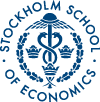No 0430: On the Adjusted Rate of Return to Women fs University Education: A Preliminary Study of OECD Countries
Hiroshi Ono ()
Additional contact information
Hiroshi Ono: European Institute of Japanese Studies, Postal: Stockholm School of Economics, P.O. Box 6501, S-113 83 Stockholm, Sweden
Abstract: It is a well known fact that on average, women in all countries earn less than men. Although less pronounced among OECD countries, the fact remains that the gender gap in earnings still persists to a significant degree. Less well known is that the rate of return (ROR) to university education is larger for women than men among most OECD countries. This higher ROR may partly explain the general pattern that there are more women than men enrolled in universities among these countries.
This paper introduces an eadjusted f rate of return to women fs university education. The adjusted ROR is estimated by comparing the earnings of female university graduates to the earnings of male high school graduates. Results from a comparison of seventeen OECD countries reveal that the overall average of the adjusted ROR is actually negative: On average, female university graduates earn less than male high school graduates. My analysis also finds that women fs enrolment in university education can be better explained by the adjusted than the true ROR. In other words, women fs economic incentives for pursuing university education is shaped by both the magnitude of the premium obtained from university education, and the gender gap in earnings. These findings present a classic case in which theory departs from practice. Although the true ROR may stand on firmer ground in theory, in practice, women are more responsive to the adjusted ROR which reveals a more realistic scenario of where women stand relative to men.
The adjusted ROR may be a helpful measure in policy analysis, both in broadening the perspectives of ROR estimations, and in future discussions which involve gender equality in education and labour market outcomes. Because of the limitations of data available in international comparisons, the research is still in its rudimentary stages. The full paper first guides the reader through interpretations and implications of the basic statistics. This section is followed by a theoretical discussion of the adjusted ROR, estimations of the adjusted ROR using OECD statistics, a more detailed analysis of the concept using Japan as an illustrative case, and a discussion concerning the relationship between the adjusted ROR and women fs enrolment in university education. The paper concludes by exploring possibilities for future research in further developing the concept of the adjusted ROR.
Keywords: human capital; returns to education; gender inequality
JEL-codes: I22; J16; J24; J31; N30
34 pages, First version: February 9, 2001. Revised: August 1, 2001. Earlier revisions: March 15, 2001, March 15, 2001, May 25, 2001, June 6, 2001.
Questions (including download problems) about the papers in this series should be directed to Helena Lundin ()
Report other problems with accessing this service to Sune Karlsson ().
RePEc:hhs:hastef:0430This page generated on 2024-09-13 22:15:05.

